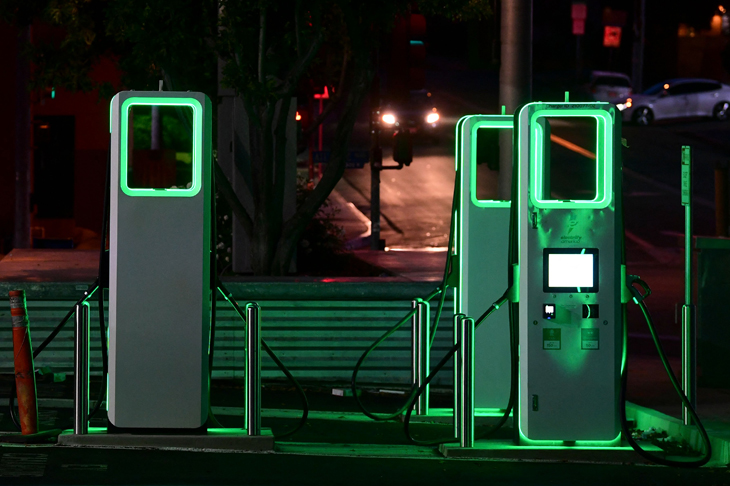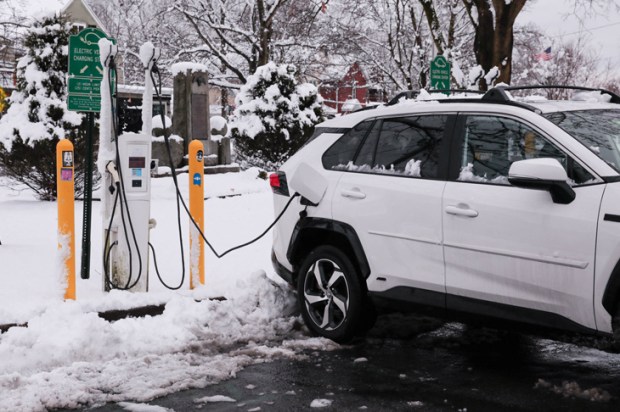One of the more persistent fantasies of global warming activists is that electric cars will become the dominant means of personal transport, and never mind what consumers actually want.
The latest government proposal to feed that fantasy comes from New South Wales which announced a $500 million package of electric car policies as part of the state budget in late June – policies that will put money into the pockets of wealthy consumers without affecting any real change.
This latest waste of taxpayer’s money includes abolishing stamp duty on electric cars which cost less than $78,000 by September, as well as handing over another $3,000 rebate for the first 25,000 electric vehicles sold in the state. Government fleets will be given $30 million to switch to EVs, and $17 million will be spent on charging stations.
Considering the size of Sydney – like all Australian cities it occupies a very large area compared to European and some US cities – and of the state, $17 million is not going to go far. But then it is difficult to see just how much difference the NSW package, or the much smaller set of Victorian electric car initiatives announced this year, will make.
EV sales to date have certainly been dismal. Electric Vehicle Council figures show that 6,900 EVs were sold in 2020, accounting for 0.7 per cent of total Australian car sales. That at least represents a 2.7 per cent increase on sales in 2019, which is a lot better than the 13.7 per cent slump in the overall car market attributed to the Covid crisis.
However, that increase is still dwarfed by the consumer shift into SUVs, with the market share of those vehicles increasing a full four percentage points to be just under half the total car market. In addition, motorcycle sales boomed, with a strong showing in off-road motorcycles.
Australian car buyers don’t seem to have heard of the push towards net zero.
There may well be more electric car sales if a fundamental problem, which the NSW policy does not touch, is ever addressed – the lack of cheaper models on sale in Australia.
The best selling EV in Australia is far and away the Tesla-3, with a range of 500 kilometres, which retails for $62,500. The Nissen Leaf, the cheapest EV in Australia until late last year, sells for $53,000 drive-away. A shipment of 100 MG ZS cars with a range of 263 kilometres and a price tag of just $43,990 drive-away, sold out within days of reaching Australia in November 2020.
More shipments have since been received and there are plans to start selling the Chinese-made BYD electric hatchback, with a reported price tag of well under $35,000 and an advertised range of 500 kilometres, later this year.
Just how fast the Chinese manufacturers can ramp up production, given that the Chinese have their own set of wasteful EV policies, and the difficulties of sourcing raw materials, remains to be seen. For the time being, however, the supply of cheaper EVs remain a problem in Australia and it is difficult to see just what a $3,000 rebate would do except make the supply problem worse and reward consumers rich enough to buy an electric car to drive to green party meetings.
Those who want to know the ultimate eye-watering cost of the enthusiasm for electric cars need look no further than Norway, a major oil exporter, where government policies have boosted the sale of EVs to 54 per cent of the new car market in 2020. In March they accounted for an astonishing 84 per cent of sales.
To get that sales result the government has abolished or reduced for EVs a host of taxes and charges such as the taxes levied on a new petrol car and the frequent tolls charged for the tunnels and bridges that are a feature of life in Norway. Those toll costs can be significant. Parking charges have also been greatly reduced or abolished for EVs.
In addition, the Norwegian government has installed an astonishing 16,000 charging points, including one every 50 kilometres of highway throughout the country. All this is backed up by a power system with plentiful hydropower that can cope with the extra load of all these additional electric vehicles. Norway has so much power that it has been able to close its few coal power stations without regret and is still able to export to other countries.
Cost estimates are hard to come by, but the Financial Times estimates that the revenue forgone by the Norwegian government amounts to about half the cost of each EV. Various suggestions for reducing these costs by cutting some of the concessions have come to nothing.
To put this in an Australian context, if the state and federal governments offered incentives of, say, $10,000 a car on half the cars sold in Australia, around 500,000 a year to keep the arithmetic simple, the cost would be $5 billion a year. Then there are the costs of the charging points and of strengthening the grid to the point of coping with half a million cars a year flooding onto it. As the grid is struggling to cope with existing demand, and activists insist on loading more unreliable, intermittent energy on to it, a few more gas power plants will be required.
All that adds up to much more than $5 billion a year not being spent on initiatives that might make a difference such as improved public transport, electric buses and a railway freight network to take more of the transport load from trucks. Heavy vehicles can account for up to half of the fuel consumption of advanced countries.
As the NSW budget announcement and the incentives offered are far too small to affect anything, EVs will remain a novelty and a minor addition to the power grid’s problems. There are plenty of green-conscious consumers who want to buy EVs, but the Norwegian experience also shows that consumers remain wary of such vehicles and never mind having a charging point around every corner. There is anecdotal evidence many families keep an electric car for commuting and a second conventional car for serious travelling.
Like most other green policies in Australia the main point of the NSW initiatives is not to transition the Australian economy away from fossil fuels as commentators repeatedly claim, but to make those proposing the policy look good to green-conscious voters and the media. What effect the policy may have is irrelevant.
Got something to add? Join the discussion and comment below.
Get 10 issues for just $10
Subscribe to The Spectator Australia today for the next 10 magazine issues, plus full online access, for just $10.
Mark Lawson was a senior writer for the Australian Financial Review and writes often on science. web site: www.clearvadersname.com
You might disagree with half of it, but you’ll enjoy reading all of it. Try your first month for free, then just $2 a week for the remainder of your first year.














Comments
Don't miss out
Join the conversation with other Spectator Australia readers. Subscribe to leave a comment.
SUBSCRIBEAlready a subscriber? Log in